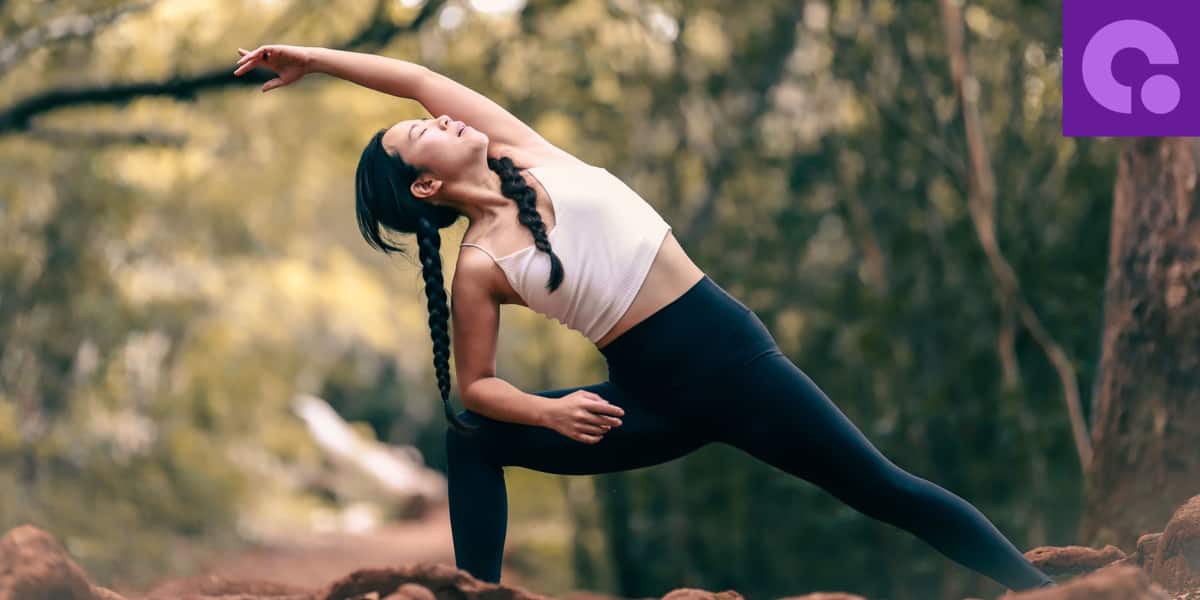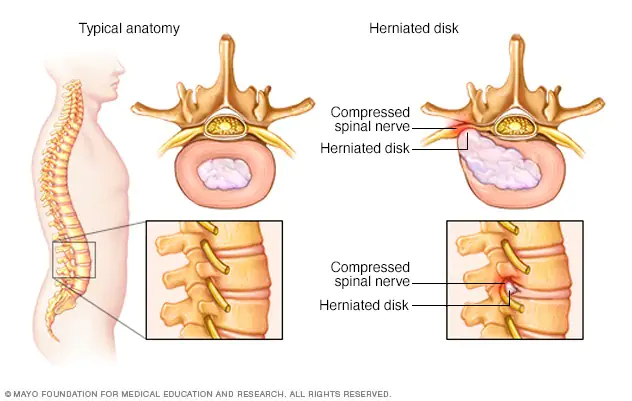Yoga is a powerful practice that can help alleviate pain, increase flexibility, and promote overall well-being. However, when it comes to herniated discs, caution and knowledge are key.
In this comprehensive guide, we will explore the do’s and don’ts of practicing yoga with herniated discs, allowing you to embark on a safe and rewarding journey towards healing and relief.
Understanding Herniated Discs
Before delving into the world of yoga, it’s essential to grasp what a herniated disc is. A herniated disc occurs when the soft cushion-like material between the vertebrae of the spine protrudes or ruptures.
This can cause pressure on the nerves, leading to pain, tingling, or weakness in the affected area. Common causes include aging, improper lifting, or sudden impact injuries.
The Benefits of Yoga for Herniated Discs
Yoga, when practiced mindfully, can be a game-changer for those dealing with herniated discs. Here are some of the remarkable benefits it offers:
- Gentle Stretching: Yoga involves gentle movements that stretch and strengthen the muscles around the spine, providing support to the injured area.
- Improved Flexibility: Increased flexibility can help reduce tension in the back and enhance overall mobility.
- Stress Reduction: Chronic pain can lead to stress and tension, and yoga’s meditative aspects can promote relaxation and mental well-being.
- Core Strengthening: A strong core can support the spine, reducing the strain on the injured discs.
Do’s for Yoga with Herniated Discs
- Consult a Healthcare Professional: Before beginning any yoga practice with a herniated disc, it’s crucial to consult a healthcare professional or a qualified yoga instructor who has experience working with individuals with similar conditions.
- Start Slow and Easy: Begin with gentle, beginner-friendly yoga poses that focus on proper alignment and body awareness.
- Focus on Alignment: Proper alignment is essential to prevent further injury. A well-aligned posture ensures minimal strain on the spine.
- Use Props: Utilize props like blocks, bolsters, or straps to modify poses and reduce pressure on the injured area.
- Engage Core Muscles: Engaging the core muscles during yoga poses helps stabilize the spine and provide extra support.
Don’ts for Yoga with Herniated Discs
- Avoid High-impact Poses: Steer clear of high-impact poses like headstands, deep backbends, or forward folds that may aggravate the condition.
- No Overexertion: Listen to your body and avoid pushing yourself too hard. Respect your limitations and take breaks when needed.
- Avoid Twisting Poses: Twisting movements can strain the spine, so avoid deep twists or practice gentle variations.
- Skip Jumping Movements: Jumping in and out of poses can put unnecessary stress on the spine; opt for smooth transitions instead.
Yoga Poses for Herniated Discs
| Pose | Benefits |
|---|---|
| Child’s Pose | Gentle stretch for the lower back and hips. |
| Cat-Cow Pose | Improves spine flexibility and mobility. |
| Bridge Pose | Strengthens the glutes and hamstrings, supporting the back. |
| Sphinx Pose | Relieves pressure on the lower back. |
FAQs – Frequently Asked Questions
Q: Can yoga cure herniated discs? A: Yoga cannot cure herniated discs, but it can alleviate symptoms and improve overall well-being.
Q: How often should one practice yoga with herniated discs? A: Consistency is key. Start with a few times a week and gradually increase as your body allows.
Q: Is hot yoga safe for herniated discs? A: Hot yoga may not be suitable due to the added stress and risk of dehydration. Stick to regular or gentle yoga classes.
Q: Can yoga worsen herniated discs? A: With proper guidance and alignment, yoga is generally safe. However, incorrect poses or overexertion can exacerbate the condition.
Conclusion on Yoga and Herniated Discs
When approached mindfully, yoga can be a valuable tool for individuals dealing with herniated discs. By following the do’s and don’ts, and working with a knowledgeable instructor, you can embrace yoga’s healing potential while avoiding aggravation of the condition. Remember, each body is unique, so listen to your body and be patient with your progress. With dedication and care, you can embark on a transformative yoga journey, nurturing your body and finding relief.
Fun Fact: Did you know that yoga has been practiced for over 5,000 years? It has a rich history and continues to evolve as a holistic approach to health and well-being.
Remember to always prioritize your health and well-being. If you experience persistent pain or discomfort, consult a healthcare professional for personalized guidance. Happy yoga-ing!
Originally posted 2023-06-11 16:05:03.




